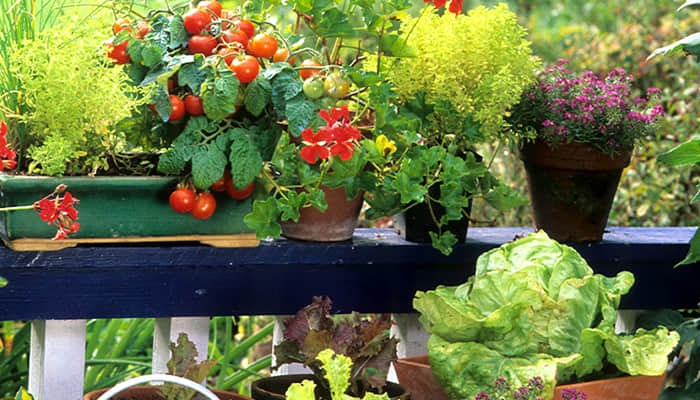
There was a time when gardens had to choose — be pretty, or be practical. Roses in one corner, lettuce in another. Beauty over here, usefulness over there. But lately, a new movement has taken root (pun intended): edible gardens that look like art.
You’ve probably seen them on Instagram — raised beds overflowing with rainbow chard, violas, and nasturtiums; fruit trees surrounded by lavender borders; kale that looks like it belongs in a bouquet. It’s called edible landscaping, and it’s changing the way we think about gardening, one delicious flower at a time.
What Exactly Is an Edible Garden?

At its core, an edible garden is a space where aesthetics meet function. Instead of separating ornamental plants from your herbs and veggies, you blend them together into a cohesive design that pleases both the eyes and the taste buds.
Think purple basil next to bright orange marigolds. Strawberries creeping through chamomile. Or a rustic trellis covered in both roses and runner beans.
The result? A garden that’s vibrant, alive, and constantly evolving — a living canvas you can eat from.
Why Everyone’s Falling in Love With It

- It’s Instagram gold.
Let’s be honest — edible gardens are irresistibly photogenic. The mix of colors, textures, and wild growth gives that effortlessly natural look that feels both cozy and aspirational. You can snap your salad ingredients right from your garden and make your followers swoon. - It’s sustainable and local (in the truest sense).
Growing your own food — even a handful of herbs — reduces packaging waste, transport emissions, and your dependency on store-bought produce. Plus, you know exactly what’s on your plate (and what’s not, like pesticides). - It reconnects you to your food.
When your lunch comes from your backyard, you taste the difference — literally and emotionally. You slow down, pay attention, and remember that food isn’t just fuel; it’s part of a living cycle you helped nurture. - It boosts biodiversity.
A mix of edible and ornamental plants invites pollinators, balances soil health, and creates a more resilient ecosystem. Bees love your basil flowers, butterflies adore your dill, and you get a thriving, self-sustaining garden in return.
Easy Ways to Start Your Own Edible Paradise

You don’t need a large backyard or professional landscaping skills. Start small — and make it beautiful.
1. Mix herbs with flowers.
Herbs like thyme, rosemary, and sage make wonderful borders. They smell divine and attract pollinators. Pair them with calendula, nasturtiums, or pansies for a burst of color (and bonus — they’re edible, too!).
2. Choose veggies with ornamental value.
Rainbow Swiss chard, purple cabbage, and red-veined sorrel look stunning alongside traditional blooms. Even lettuce can be gorgeous when you mix varieties — from deep ruby to lime green.
3. Grow fruit trees as focal points.
A dwarf apple or fig tree can anchor your garden and provide shade for smaller plants. Surround it with companion herbs like chives and comfrey to enhance both health and beauty.
4. Create edible paths and edges.
Line walkways with strawberries, creeping thyme, or mint (though be careful — mint likes to take over). Each step releases fragrance, and you can grab a snack while you stroll.
5. Think vertically.
Don’t have space? Grow up. Trellises with climbing beans or peas, hanging baskets with cherry tomatoes, or wall planters filled with edible flowers — all add visual depth and practicality.
From Garden to Table — The Joy of Harvesting Beauty

One of the most satisfying parts of an edible garden is harvesting food that’s too pretty to eat… until you do. Imagine sprinkling fresh violas over a salad, using lavender to flavor shortbread, or making a cocktail with your own basil and berries.
It transforms cooking into an act of creativity and gratitude — you’re not just making a meal, you’re savoring the story of your garden.
Why This Trend Is Here to Stay

Unlike fleeting design fads, the edible garden trend grows from something deeper — a desire for authentic connection.
We’re all craving spaces that nourish us, not just decorate our lives. And an edible garden does exactly that. It reconnects us to nature, rewards patience, and lets us take part in the quiet miracle of growth.
As one gardener put it online, “Every meal feels like a thank-you note to my backyard.”
So if your garden is looking a little too perfect, maybe it’s time to let it grow a little wild — and a little delicious.
Because in 2025, the most beautiful gardens aren’t just seen.
They’re tasted.
